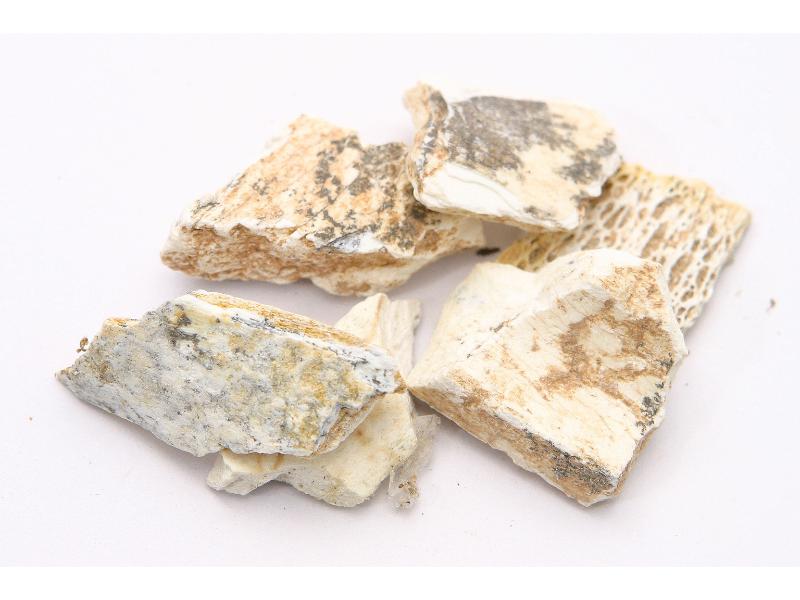Search in medicinals
Mastodi Ossis Fossilia
Dragon bone
龙骨 〔龍骨〕 lóng gǔ

Alternate Chinese names: 化龙骨 huà lóng gǔ; 花龙骨 huā lóng gǔ
Kingdom: Animal
Origin in PRC Pharmacopoeia: Fossilized bones of various mammals including rhinoceros, antelope, deer, pig, and bovines. (PRC Pharmacopoeia)
Use: Medicinal
Category: Spirit-quieting agents / Heavy settling spirit-quieting agents
Properties: Sweet, astringent; balanced.
Channel entry: Heart, liver, and kidney channels.
Actions and indications:
- Settles fright and quiets the spirit: Disquieted heart spirit, heart palpitation, insomnia, fright wind and epilepsy, and mania and withdrawal.
- Calms the liver and subdues yáng: Ascendant hyperactivity of liver yáng, manifesting in dizziness or tinnitus, as well as vexation and agitation, and irascibility.
- Contracts and astringes: Seminal emission, seminal efflux, enuresis, frequent urination, flooding and spotting, vaginal discharge, spontaneous sweating due to exterior vacuity, and night sweating.
- Additional uses: Calcined lóng gǔ may be used externally to absorb dampness, close sores, and engender flesh. It is used to treat eczema or enduring ulcerated sores that fail to heal, for which it is generally combined with additional medicinals that close sores, resolve toxin, and absorb dampness.
Dosage and method: Oral: 15–30g in decoctions; it should be predecocted. For its astringing action or external applications, the calcined form should be used. For other indications, the raw form is preferred.
Warnings: Contraindicated in the presence of damp-heat and other repletion evils.
Product description: This is the fossilize bone of various mammals including rhinoceroses, antelopes, deer, pigs, and bovines. Distinction is made between flowery dragon bone Wǔ huā lóng gǔ (五花龙骨 Mastodi Ossis Fossilia Florida, flowery dragon bone) and Bái lóng gǔ (白龙骨 Mastodi Ossis Fossilia Alba, white dragon bone). Flowery dragon bone comes in irregular lumps, 6–10 cm long, 6–10 cm wide and 2–3 cm thick. It is pale gray with red, blue, yellow, and brown markings on the fractures like the annual rings of trees. It is hard and brittle and breaks like slate. White dragon bone is whitish yellow and comes in larger pieces. It is hard as stone and chalky in substance.
Quality: Flowery dragon's bone with pronounced colored markings is the best.
Production area: Hénán, Héběi, Shānxī, Shǎnxī (Shaanxi), Shāndōng, Inner Mongolia, Húběi, Sìchuān, Yúnnán, Guǎngxī, and Qīnghǎi.
Etymology: The name lóng gǔ龙骨, literally dragon bone,
reflects a traditional explanation of this item's origin.
See: Lóng chǐ (龙齿 Mastodi Dentis Fossilia, dragon tooth)
Back to search result Previous Next